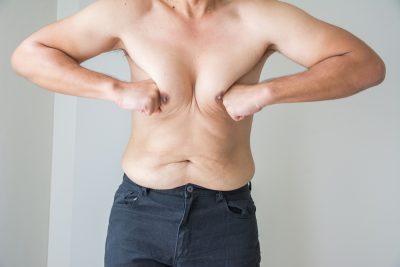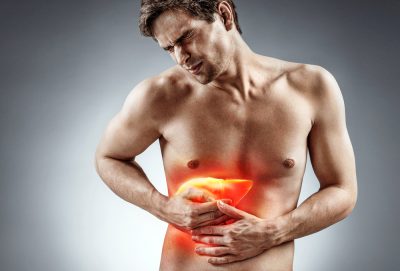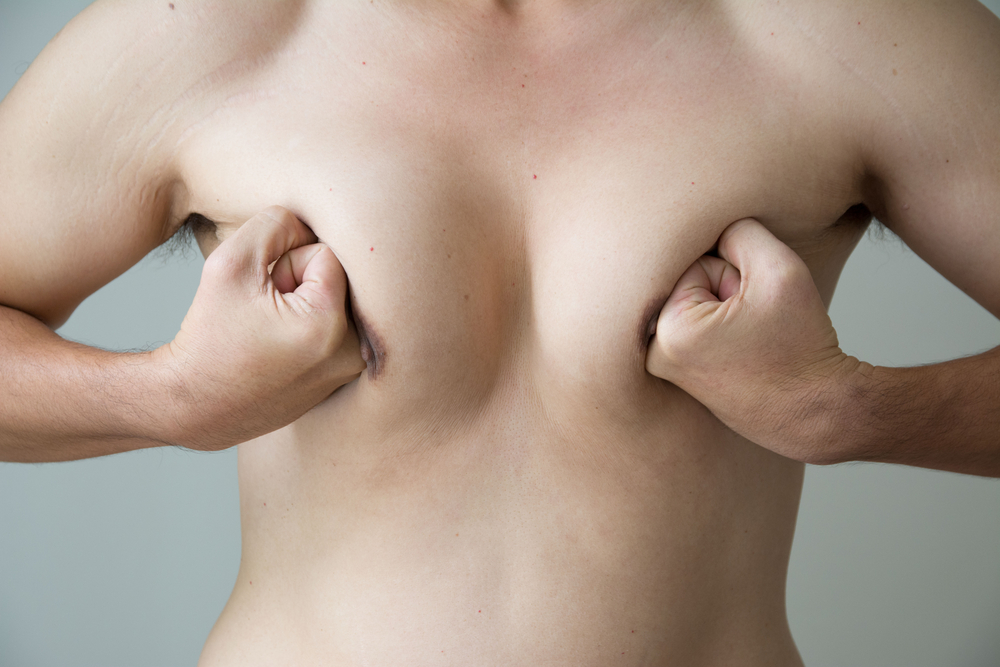Everyone is born with breast tissues and cells. Although men do not have breasts that produce milk, but they can very well develop breast cancer.
However, breast cancer in men is rare and happens in about only one in a thousand men. Not even up to one percent of breast cancer cases are men, so you can understand why it is rare.
Male breast cancer mostly occurs in older men, but it can also happen at any age.
Male breast cancer is usually noticed by a solid lump found under the areola and nipple. Men believe they carry higher mortality above women in cancer that may be somewhat true because the awareness rate of breast cancer in men is almost zero.
Because they are not well informed and don’t know what symptoms to look out for, it usually slows down the decision of seeing a healthcare provider/doctor.
Men diagnosed early with breast cancer, have better chances of surviving and an excellent opportunity for a cure. Treatment is removing the breast tissue by undergoing a surgical operation.
Other treatments involve chemotherapy and radiation therapy, but this would be recommended based on your particular condition.
Symptoms of Male Breast Cancer
Breast cancer in men shows similar signs as in women, including the presence of a lump. Symptoms include:
- Thickening in your breast tissue
- A painless lump formed in your breast tissue
- Discharge from your nipple
- Changes in the skin covering the nipples such as scaling or redness
- Changes to your nipple, or inward turning of the nipple
When you notice anything at all strange about your breast, you should immediately visit your doctor.
Causes of Male Breast Cancer
It’s still not defined and clear on what causes breast cancer in men. Doctors have figured that breast cancer occurs when some breast cells divide faster than healthy cells do.
The accumulating cells form a tumor that would spread to the surrounding tissues, the lymph node, and throughout the body.
Where Does Breast Cancer Begin in Men?
 Everyone is born with little amounts of breast tissues, which consists of the lobules – milk-producing glands that transport milk and fat to the nipples.
Everyone is born with little amounts of breast tissues, which consists of the lobules – milk-producing glands that transport milk and fat to the nipples.
When it gets to the puberty stage, women develop more breast tissues than men; however, they also develop breast tissues in a minimal amount. Because of this, they are susceptible to breast cancer.
Breast cancer begins from different parts of the breast, but mostly the duct that transports milk to the nipple. Some start right in the glands that produce breast milk.
Men have these ducts and glands as well, only that they aren’t functional, and other breast cancers start in other types of breast cells, but they aren’t common.
The few cancers that start in other tissues in the breast are called “sarcomas” and “lymphomas,” but they are not precisely considered breast cancers.
Many types of cancer cause lump in the breast tissues, but not all do, so you should watch out for other symptoms of male breast cancer.
It’s also important to know that most breast lumps are benign and not cancerous. Benign tumors are harmless and restricted to just inside the breast, so it isn’t life-threatening.
However, all breast lumps or changes to the breast should be checked by a doctor and rule out whether it is benign or malignant.
How Does Male Breast Cancer Spread?
Breast cancer proliferates when the cancer cells enter the blood and are transported into throughout the body. A lymph system is a group of lymph vessels located all around the body.
It carries lymph fluids and connects it with lymph nodes. Cancer cells of the breast get into the lymph vessels; then start to multiply in the lymph nodes.
The majority of the breast’s lymph nodes fall into:
- Lymph nodes located all over the collar bone
- Lymph nodes under the arms, also called axillary nodes.
- Lymph nodes within the chest, very close to the bone of the breast
If the breast cancer has spread fully into the lymph nodes, then it is likely a high percentage of it is already inside the whole body, because it would travel through the lymph system.
When the lymph nodes with breast cancer multiples in your body, the higher the risk of cancer being present in other organs.
When cancer is found in more than one lymph node, certain complications and alterations in treatment plans happen. That’s because detailed, careful testing would need to be done, to know how far cancer has proliferated.
However, not all men who have cancer cells present in their lymph node develop metastases to other areas and vice versa.
Types of Male Breast Cancer
Most breast cancers are carcinomas, and it’s often a type of carcinomas called “adenocarcinoma,” which begins in glandular tissues. Breast adenocarcinoma starts in the milk ducts or milk-producing ducts.
There are other less common forms of cancer, like Paget’s disease, phyllodes, sarcomas, and angiosarcomas, which start in the connective tissues’ cells.
Sometimes one single breast tumor can be the combination of different types of cancer, and in some infrequent occasions, cancer cells may not form a tumor or lump at all.
The name of cancer type will change depending on its severity:
- In situ – when breast cancer has not spread yet.
- Invasive or infiltrating – when cancer has invaded the surrounding breast tissues
Infiltrating Ductal Carcinoma
The majority of men diagnosed with breast cancer have a case of Infiltrating Ductal Carcinoma (IDC). This is a condition where the cells around or in the ducts begin to spread to the surrounding tissues.
It starts in the milk duct of the breast and passes the wall of the duct until it spreads, and it grows into the breast’s fatty tissues.
Once it breaks through the wall of the duct, there is every possibility for it to spread throughout the body. And it would be able to spread through the bloodstream and lymphatic system.
At least 8 in 10 breast cancers in men are IDCs, and because the male breast is smaller, it starts very close to the nipples, and it is also more likely to spread to the nipple.
Inflammatory Breast Cancer
This is an aggressive but rare form of breast cancer, and it makes the breasts swollen and red, rather than forming a lump. It can sometimes be mistaken for an infection, but it is uncommon in men.
Lobular Carcinoma in situ (LCIS)
LCIS can also be called lobular lesion/neoplasia. In lobular neoplasia, similar cells to cancer cells grow in the lobules of the breast’s milk producing gland, but they are still restricted, as they haven’t broken through the lobules walls.
LCIS can’t be considered as a real non-infiltrating cancer because when left untreated, it won’t develop into infiltrating cancer, but it is associated with a higher risk in both breasts, and it rarely occurs in men.
Paget’s Disease of the Nipples
Paget’s disease is a form of cancer of the breast that begins in the ducts of the breast and metastasis to the nipple and in some cases can circulate to the areola.
The nipple’s skin would appear rough and reddish with an oozing and burning sensation, and you might notice an underlying lump in the breast. Paget disease can sometimes be associated with invasive ductal carcinoma and DCIS, and it occurs more in men than in women.
Ductal Carcinoma in situ (DCIS)
DCIS, sometimes called intraductal carcinoma, is seen as a non-infiltrating breast cancer. In DCIs, cells that lined the ducts transform to look like cancer cells.
The significant contrast between DCIS and invasive cancer is the spreading of cancer cells into the wall’s duct and invaded the surrounding tissues of the breast or on the surface of the breast.
DCIS can sometimes be categorized a pre-cancer since, in some cases, it can turn out to be invasive cancer.
Currently, there isn’t an accurate way to tell which would be invasive and the ones that won’t. DCIS happens in 1 in 10 occurrences of male breast cancer, and it is mostly curable with surgical operations.
Risk Factors Associated with Male Breast Cancer
Factors that increase the risk of breast cancer in men include:
Klinefelter’s syndrome
This is a symptom that occurs when a boy is born with an extra X chromosome, and it causes abnormal growth of the testosterone. Because of this, they tend to produce more estrogen than testosterone.
Older age
The risk of male breast cancer increases as you age. Breast cancer usually happens to men in their 50s and 60s.
 Liver disease
Liver disease
Conditions like liver cirrhosis, reduces testosterone and other hormones, while it increases the female hormones, which can up your risk of developing cancer of the breast.
Obesity
It is linked to higher levels of the female hormone – estrogen and increases the risk of breast cancer in men.
Testicle disease/surgery
Having inflamed testicles or surgical operation to take out a testicle can heighten your chances of developing breast cancer.
- High level of estrogen – the female hormone
- Radiation exposure
- Genetics, especially breast cancer that is associated with the BRCA2 gene.








COMMENTS